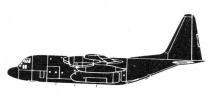Incident Overview

Description
The pilot took off with the Cessna 208 Caravan at 14:48 from Gransee Airfield. On board were 15 parachutists besides the pilot. the parachutists were dropped at FL130. On the accident day the pilot had already performed three drop flights with a total flight time of 48 minutes. After dropping the parachutists on the 4th drop flight, on approach to the airfield, the airplane was last detected by radar near the accident site at 15:05:49 at an altitude of about 550 ft AMSL. At that time, the ground speed was about 168 kt and the ground heading was about 330ø. The air traffic controller stated that he had observed the final phase of the approach. The airplane had been in a left turn near the ground with up to a 90ø bank angle. The aircraft then disappeared behind trees and struck terrain, killing the pilot. Conclusions: The aircraft accident resulted from a risky near-ground flight maneuver that resulted in impact with the ground in a controlled flight condition. The speed was outside the operational limits of the aircraft during the approach. The approach was not stabilized. Contributing human factors: – Repeated acceptance of risky flight maneuvers near the ground by the pilot (routine violations). – Pilot’s overconfidence and lack of risk assessment. Contributing operational factor: – Inappropriate wording in the flight operations manual regarding the approach to the airfield after dropping the parachutists.
Source of Information
https://www.welt.de/vermischtes/article200144078/Brandenburg-Kurz-nach-Fallschirmspruengen-Pilot-stuerzt-mit-Kleinflugzeug-ab.html, http://www.reportnet24.de/polizei/11487-gransee-flugzeugabsturz-auf-dem-ackerland-pilot-stirbthttps://www.welt.de/vermischtes/article200144078/Brandenburg-Kurz-nach-Fallschirmspruengen-Pilot-stuerzt-mit-Kleinflugzeug-ab.html, http://www.reportnet24.de/polizei/11487-gransee-flugzeugabsturz-auf-dem-ackerland-pilot-stirbtPrimary Cause
Risk of near-ground flight maneuver combined with inadequate risk assessment and operational procedures.Risk of near-ground flight maneuver combined with inadequate risk assessment and operational procedures.Share on:





